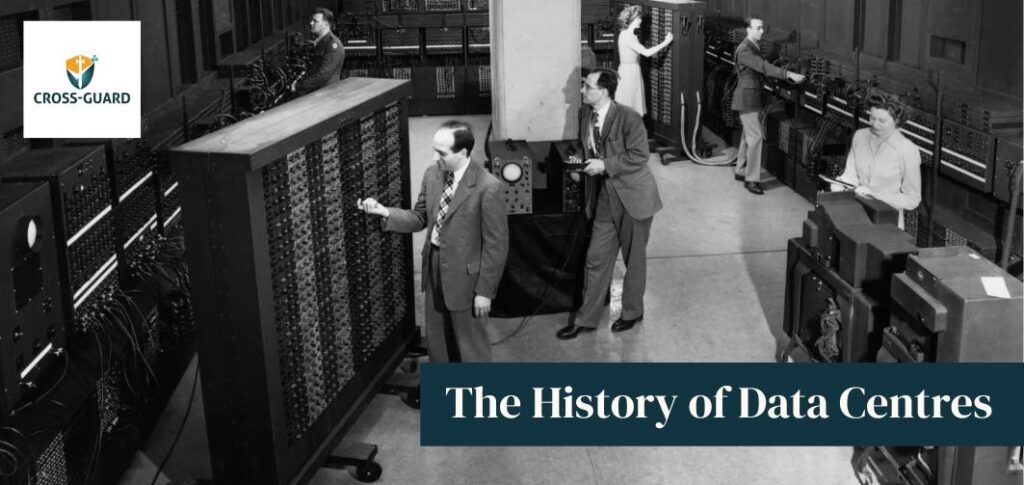The History of Data Centres

Data centres are the backbone of modern IT infrastructure in today’s digital world. These advanced facilities manage processes, distribute and protect the vast amounts of data that businesses create and process on a daily basis.
Data centres have become an essential part of IT strategy as the focus shifts to digital transformation, the cloud and big data analytics. But how did they get here? Data Centres have been a part of business operations ever since computers came on the scene. Although they’ve evolved over the years, it’s important to understand where they came from and why they’re so important.
The Mainframe Revolution
Data Centres have their roots in the mainframe revolution of the 1960s. Prior to this time, data processing and data storage were largely theoretical. With the rise of the powerful mainframe computer, organisations needed a secure environment to house these technological giants. Early data centres, also known as ‘computer rooms’, were designed to regulate environmental factors like temperature and humidity to ensure sensitive equipment did not overheat.
The CDC 6600 is widely regarded as the world’s first supercomputer. With a 40MHz processing speed, these ‘Big Iron’ computers cost millions of dollars to build and were designed and built for specific business applications. They were also notoriously unreliable and labour-intensive, so keeping them up and running for even a few hours at a time was quite a feat.
From Mainframe to Desktops
During the 70’s and 80’s, computing power increased further and desktop computers were commonplace. However, mainframe development during this period was mainly focused on processing power and performance, rather than reliability. Data integrity and protection against corruption increased steadily. However, computing power remained expensive to manage and many organisations preferred outsourcing their needs rather than maintaining in-house ‘machine rooms’.
In the 1980s and 1990s, the advent of client-server computing further increased the demand for data centres. As businesses started to rely more on networked computers, the need for centralized data storage and processing became apparent. Data centres evolved to accommodate this shift, with larger spaces and more advanced infrastructure to support the growing computing requirements.
The Rise of Colocation Data Centres
To meet the surge in demand for data centre services brought about by the rapid growth of the internet and the emergence of e-commerce at the turn of the millennium, colocation data centres started to emerge. These data centres provide a space for businesses to house their servers and IT infrastructure, while also offering the necessary power, cooling, and security measures. This shift towards colocation data centres allowed businesses to outsource their data management needs, reducing the cost and complexity of maintaining their own on-premises data centres. Additionally, colocation data centres offered scalability, enabling businesses to easily expand their IT infrastructure as their needs grew. This trend marked a significant shift in the way companies manage their data and paved the way for the growth of the digital economy.
Powering The Future
The future of data centres looks promising with several advancements on the horizon. One key aspect is the implementation of more energy-efficient technologies. This will help reduce the carbon footprint and minimize the environmental impact of data centres. Additionally, the adoption of artificial intelligence and machine learning will enhance data centre automation, leading to improved efficiency and reduced downtime. Furthermore, the integration of edge computing will bring data processing closer to the source, resulting in faster response times and reduced network latency. These developments indicate a bright future for data centres, ensuring they remain at the forefront of technological advancements
SHARE

